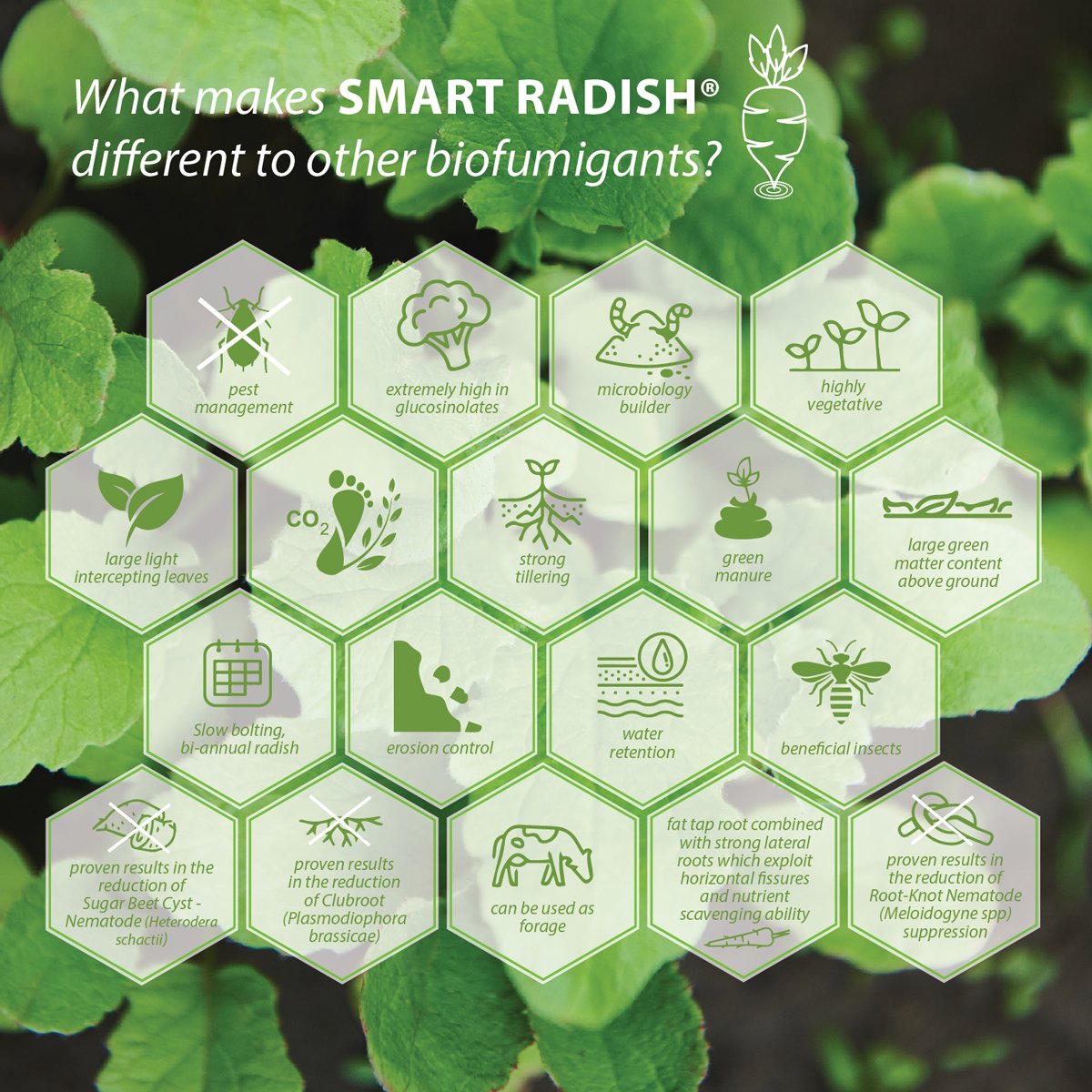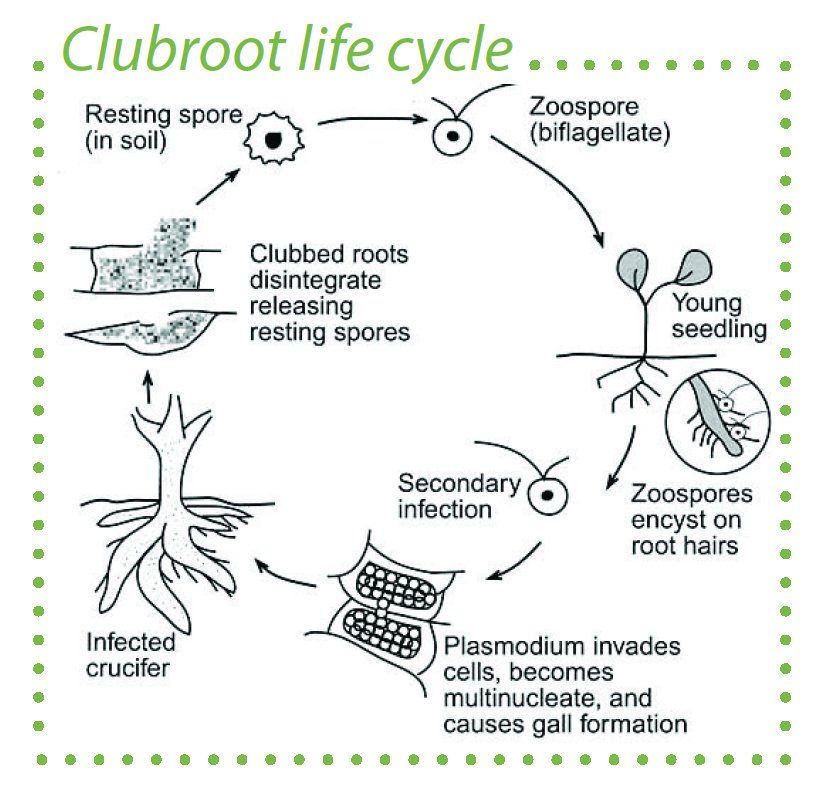Smart Radish
22 Aug 2022 by Pip Kenny
lets be SMART together...
Prime soils for vegetable production within New Zealand are coming under increasing pressure from a range of external forces.
The importance of protecting the ground we have has never been more important.
As growers, you are constantly chasing improvements in the plant genetics of your commercial vegetable varieties but why not in your cover/catch crops?
The importance of cover/catch crops has been well researched and documented throughout the New Zealand horticultural industry.
The influence cover crops have on soil biology, pest and disease pressure and soil structure is critical in maintaining a healthy growing platform for commercial vegetable crops.
A cover crop will increase soil quality by improving the biological, chemical, and physical soil properties.
What is a BIOFUMIGANT?
Biofumigation is an approach to soil borne pest and pathogen management that involves the use of plants primarily from the Brassicaceae family.
The biofumigant properties of these species mean that when mulched they release compounds into the soil which help reduce pest pressure.
Control of some soil borne pathogens may be achieved by the use of decoy or catch crops. The host plant produces chemical compounds which stimulate the germination of resting spores of the pathogen.
The host plant is resistant meaning that germinating spores (zoospores) are mobilised and then effectively starved to death resulting in a significant reduction of pathogenic spores.
GLUCOSINOLATES and their importance...
Glucosinolates are biologically active compounds found in the Brassicaceae family of plants.
The major role of glucosinolates in plants is believed to be a defensive response to external or environmental stimuli.
Glucosinolates are involved in communicating and triggering a range of responses in the plant defence against pest and disease.
When pathogens are present glucosinolates are hydrolysed by the enzyme myrosinase creating a toxic compound.
The higher the level of the glucosinolates, the stronger the plant’s ability to fight off pests and disease.
SMART RADISH® has been developed here in New Zealand by a collaboration between Plant Research NZ and Norwest Seeds.
SMART RADISH® can be used in combination with other cover crop species. Since its development in 2017, SMART RADISH® has been exported all around the world helping growers combat soil borne pests and diseases while improving soil structure and nutrient cycling.
is very excited to offer this line of cover crop to our customers.

SMART RADISH® vs Clubroot
Clubroot is a major issue affecting brassica growers nationwide. While there is no silver bullet in the management of clubroot, due in part to the fact there are multiple strains of the pathogen, good crop management and suitable tools of the trade can help reduce spore numbers and the effect of this invasive pathogen.
SMART RADISH® produces compounds which stimulate the germination of the resting clubroot spores. The newly germinated spores (zoospore) are now mobile and travel via water particles throughout the soil in the hunt for root hairs to infect.
Due to the high resistance of the SMART RADISH®, the zoospores are unable to infect the plant and are starved to death, resulting in the reduction of clubroot found in the field.
When combined with other husbandry practices, SMART RADISH® has proven to help reduce and control the infection levels of Clubroot in our soils.




